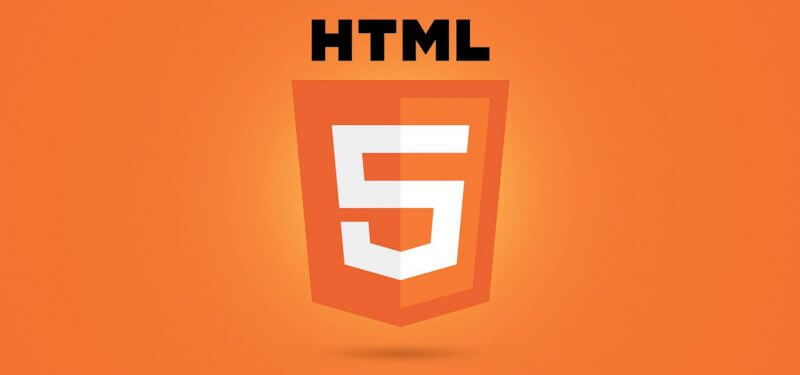"HTML5 <Head> Explained"
 Reagan Mwangi
Reagan Mwangi
Introduction
What is HTML5 HTML5 is Hypertext markup language, it is a markup language used for structuring and presenting hypertext documents on the World Wide Web.Html5 was released in a public-facing form on January 22 2008 to make the language easily readable to all humans and consistently understood by computers and devices such as web browsers
Layout
HTML5 introduces new semantic elements that help to determine a more structured and meaningful layout for web pages these semantic elements improve accessibility, SEO, and code readability
For today's section, we are going to focus on the <head> section which is an integral part of the HTML5 structure containing the meta information, links to stylesheets and scripts, and other resources required by the page . When discussing HTML5 the focus is often on the visual structure and the content organization which is my most people only discuss the elements such as <header>,<nav>, <main> however, the <head> section is essential for a complete HTML5 document.
Here is an overview of the <head> section in context to the HTML5 layout
<meta charset=”UTF-8”>
<meta name=”viewport” content=”width=device-width, initial-scale=1.0”>
<title>Name</title>
<link rel=”stylesheet” href=” ”>
<script></script>
<link rel=”icon” href=”favicon.ico”>
<meta charset=”UTF-8”>
The <meta charset=” UTF-8”> tag is a crucial element in HTML5, representing a meta-information tag that specifies the character encoding used in an HTML document. Character encoding is the process of converting characters into a specified format for efficient storage and transmission
1.HTML Meta Tags:
. Meta tags in HTML provide metadata about the document. These are information elements that are typically not displayed to the users but are used by browsers and various other search engines to understand various properties of a page
2. Character Encoding:
.Character encoding determines how text is represented in bytes. Different encodings represent characters in different ways. A mismatch in encoding can lead to misinterpreted or garbled text.
.UTF-8 is one of the most widely used character encodings, known for its flexibility and compatibility with a vast range of characters including those from various languages and special symbols
3. Purpose of <meta charset=”UTF-8”>:
. The tag specifies that the HTML document uses UTF-8 encoding and informs the browser to interpret the document using this encoding ensuring that the characters are displayed correctly
4. Why UTF-8?
. UTF-8 is a variable-width character encoding, capable of representing any character in the Unicode standard. it uses one byte for common characters like ASCII but also uses more bytes for less common characters.
. This flexibility makes UTF-8 ideal for web content allowing a wide range of languages and symbols without the risk of character corruption
5. Common Uses And Importance:
.It ensures compatibility across different browser platforms and devices
. It is crucial for internationalization and localization as it supports a wide range of languages and symbols
. Without this tag, browsers may result to different encoding leading to display issues, especially for non-ASII characters
<meta name=”viewport” content=”width=device-width, initial-scale=1.0”>
This tag is a critical element in responsive web design. It controls how a web page is displayed on various devices, particularly mobile devices. Let's delve deeper into it
Purpose of The Viewport Meta Tag:
- This meta tag helps to define the viewports characteristics which is the visible area of a web page that a user sees on their screen it guides the browser on how to display the content of the HTML document
Understanding “width=device-width”:
The ‘width=device-width’ part of the metadata tag instructs the browser to set the width of the viewport to match the device’s width
This setting is crucial for responsive design as it ensures that the web page's layout adapts to different screen sizes; without it, the web page might not render correctly on smaller screens like those of mobile phones.
Explanation of “initial-scale=1.0”:
The ‘initial-scale=1.0’ part defines the initial zoom level when the page is loaded a value of 1.0 means the content is displayed at 100% scale without any zoom applied.
This setting ensures that the content appears at a readable size by default and prevents automatic zooming which could distort the layout of the contents of the page causing elements to overflow.
Why this tag is important:
With a wide array of devices used to access the web ranging from desktops, tablets, and smartwatches to smartphones web pages must be designed in a flexible and adaptable manner
It helps in common issues such as horizontal scrolling, misaligned elements, or overly zoomed or squished content on mobile devices.
Additional Parameters and Considerations:
‘Maximum-scale’ and ‘minimum-scale’, Which limit how much a user can zoom in or zoom out
‘User-scalable’, Which specifies if users are allowed to zoom in on the page
While useful, these additional parameters should be used with caution to ensure a good user experience
<title>Name</title>
The <title>Name</title> tag in HTML5 is part of the <head> section and is a crucial element that specifies the title of a web page. it plays a significant role in how a website is perceived by users and the search engine
- Location and Purpose:
This tag is placed in the <head> section of the HTML document. It defines the title of the webpage that appears in the browser tab, bookmarks, search engine results, and social media previews.
This tag is a key indicator of the page content helping users identify and navigate through multiple tabs
- Search Engine Optimization (SEO):
Search engines use the content of the <title> tag to understand the context of a web page. it's one of the primary elements used in search engine results pages (SERPs)
A well-structured tit;e can improve the visibility of the website in search results making it more likely to be clicked on by users
- Length and Content Guidelines:
Titles should be conceived yet descriptive, ideally between 50 to 60 characters if it is too long, search engines and browsers might truncate it reducing their effectiveness
The title should reflect the content of the webpage, using relevant keywords without being overly keyword-stuffed this balance helps SEO without compromising user experience
- Usability and User Experience:
A clear and descriptive title helps users understand the purpose of a page, aiding navigation and usability it provides a quick reference point when users have multiple tabs open
The title also appears while sharing links in social media impacting how others interact and perceive the content
- Accessibility:
- Screen readers help visually impaired users navigate and understand web pages
<link rel=”stylesheet” href=” ”>
This tag in HTML5 is used to link an external CSS (Cascading Style Sheet) file to an HTML document. It plays a crucial role in web development by allowing developers to maintain separation of concerns keeping content in the HTML document while the design of the document is kept in the CSS file
Syntax
<link rel="stylesheet" href="path/to/stylesheet.css">
The rel: specifies the relationship between the HTML document and the linked resource. In this context, it indicates that the linked resource is a style sheet.
The href: Contains the URL or path to the external stylesheet. This could be a relative or absolute URL.
Use Case
Consistent design: By linking external style sheets, websites can maintain a consistent design across multiple pages.
Reuse and Modularity: External stylesheets can be reused across different HTML documents, reducing redundancy and allowing for modular design.
Efficiency and Performance: Separating styles into a single external file reduces the need for repetitive CSS code within individual HTML files, leading to transfer loading times and better browser caching.
Attributes
In addition to ‘rel’ and ‘href’ the <link> tag may have other attributes:
Media: Specifies the media type for which the style sheet is intended, such as ‘print’,’ screen’, or ‘all’. These attributes allow different stylesheets to be applied based on the device or output format.
Type: Indicates the MIME type of the linked resource. For stylesheets, this is usually ‘text/css’. While often omitted because it's implicit for stylesheets, it's good practice to include it for clarity.
<script></script>
The tag in HTML5 is used to include or reference JavaScript code in an HTML document. It plays a critical role in adding interactivity, dynamic content, and enhanced functionality to web pages
Purpose
The primary purpose of the <script> tag is to execute javascript code with an HTML document. This can be used for a wide variety of functionalities such as :
Adding interactivity and animations.
Validating form data.
Dynamically manipulating HTML elements.
Handling events like clicks and form submission.
Fetching and processing data from servers via AJAX.
Implementing complex logic for web applications.
Syntax
The basic syntax for the <script> tag can vary depending on whether you're embedding JavaScript directly or referencing an external script file.
<script src="path/to/script.js"></script>
Attributes
The <script> tag can affect page performance and user experience:
Src: Specifies the URL or path to an external javascript file. This is used when linking to scripts hosted on a server or a content delivery network (CDN).
Type: Indicates the type of script. For Javascript, it is generally ‘text/javascript’. This is often implicit but specifying it explicitly can improve compatibility.
Async: If present, the script will be loaded asynchronously. This means the browser does not wait for the script to load before continuing to render the page which improves the performance
Defer: When set the script will load after the HTML document is loaded, this is useful for scripts that do not require to run immediately and helps speed up initial page rendering.
Integrity: Used for Subresources Integrity (SRI), allowing you to ensure the integrity of scripts from CDNs by providing a hash that the script must match.
Crossorigin: Specifies the cross-origin resource sharing (CORS) policy for the script, useful when loading scripts from external domains.
Placement
The placement of the <script> tag can affect page performance and user experience:
In the <head> section: If the script must run before the page is fully loaded although this can delay rendering so use with caution.
At the End of the Body: This is generally the preferred placement for scripts that interact with page content. It allows the browser to render the page first and then load the scripts, improving performance
With ‘async’ and ‘defer’; attributes can mitigate the blocking effects of scripts in the <head> allowing scripts to load without delaying the rendering of the rest of the page
<link rel=”icon” href=”favicon.ico”>
The tag in HTML5 is used to link an icon, commonly known as a “favicon” to a webpage. This icon appears in the browser tab bookmark list, browser history and other places where the websites identify needs to be visually represented
Purpose
The main purpose of linking a favicon is to provide a visual identifier for a website. Users recognize and differentiate tabs, bookmarks, and other elements in their browsers where the websites appear . Favicons contribute to brand identity and user experience.
Syntax
The <link> tag has several attributes but in this context the most important ones are
Rel: specifies the relationship between the HTML document and the linked resource. In this case, it is set to “icon” to indicate a resource is a favicon.
Href: Contains the URL or the path to the favicon file this can be the relative or absolute path.
Type: Specifies the MIME type of the favicon file. While not always required, specifying the correct type can help with compatibility
Favicon file types
Favicon can be created in various formats with the following being the most common:
ICO: A common format for favicons that supports multiple resolutions and transparency
PNG: Widely used for its simplicity and support for transparency. Some browsers may require additional sizes for optimal display.
SVG: Scalable Vector Graphics, which can scale to any size without losing quality. However, not all browsers support SVG favicons
Subscribe to my newsletter
Read articles from Reagan Mwangi directly inside your inbox. Subscribe to the newsletter, and don't miss out.
Written by
